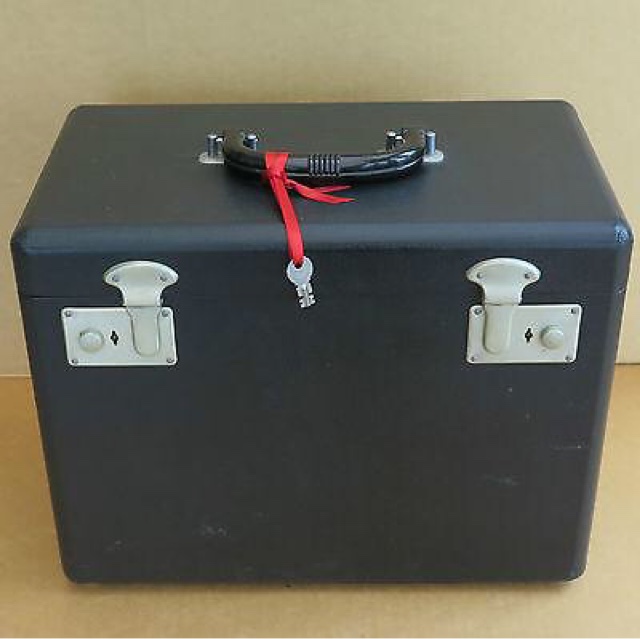This is what I learned to sew on, the treadle machine that started my journey into quilting and sewing.
There is a story behind my 1958... I have been wanting a Featherweight for many years now, taking my time figuring out what I really wanted a 221 or 222, but leaning to the 222K for my first FW. Earlier this year my husband was diagnosed with cancer, a then I knew what I wanted to do. I was going to choose his birth year in a 1958- 222K FW. I had showed my husband a couple of machines that I was looking at a 1936 FW 221, and the 1958 FW 222K, and the last one was a white FW 221 that was close as I could find to 1962. Then before I knew it... there was a package that arrived here at the house and he had bought a Featherweight for me. Do you know it was the same machine that I had chose. I was so happy... I cried like a baby! Now I must find a name that is fitting to call my little Featherweight Sewing Machine.
***********************************************************
For the Love of the Vintage Singer Featherweight Machines 221's and 222K's.
At first glance the Singer Featherweight 221 and 222K sewing machines can look like a child’s toy, as they are so small and compact in their carrying case. However their diminutive size did not detract from their functionality and they became highly popular with occasional sewers and Quilter's, because they were so easy to pack neatly away for storage and travel.
The 222K only came in black, and the 221 came in black, white and tan.... All depending on the year they were made.
I have had an old singer machine, that basically sewed a strait line, did zig zag and made button holes, before my husband bought the the Babylock Elegante Embroidery Machine about 15 years back, I have used the embroidery feature a lot making baby quilts with Peter Rabbit and friends and such. Then about 5 years ago, I decided to pick up a small machine to carry along on outings, so I could go quilt with friends. For many, many years now I have had what some might call an obsession with wanting a vintage singer featherweight sewing machine. Maybe I do, because I don't just want one, I want two, or maybe three, or something like that.... Is the an obsession?
The 222K Freearms were made in Kilbowie plant in Clydebank, Scotland from 1953 to 1961, some of the 222K's where sent to the St. John’s, Newfoundland plant in Canada for 110 volt motors, while others recieved 220 volt motors.
From its introduction in 1933 the 221/221K went through 4 major variations until production was finally ceased in the late 1960's. An enhanced 222K freearm model was introduced in 1953, with embroidery, and darning capabilities.
The most recognizable differences between the 222 and the 221 is the face plates, and the darning lever on the front of the machine.
The 221 Singer Featherweight Machines
Featherweights were produced at three locations:
- Model 221 Featherweights were produced at Singer’s Elizabethport facility in Elizabeth, New Jersey from 1933 to 1957.
- Model 221-1 Featherweights were produced at Elizabethport from 1935 to 1951.
- Model 221K Featherweights were produced at Singer’s Kilbowie facility at Clydebank, Scotland from 1947 to 1961.
- White/Green & Beige/Tan machines were produced at Clydebank, Scotland and St. John’s, Newfoundland, Canada (Beige/Tan) from 1945 to 1963. (JB 1945-1948 JC 1948-1959 JD 1959-1963)
See coordinating badges below.........
Specialty Machines
Chicago World's Fair (1934)
Texas Centennial (1936)
San Francisco Golden Gate (1939-1940)
Wrinkle (December 1939 & August 1940)
Blackside (July 1941 & September 1945)
Red S (1959-1961)
Free-Arm Featherweight
The 222K Model (1953-1961)
Featherweight Colors
(Besides Black)
(aka: Pale Turquoise or Celery Green)
Standard Badge in 1950 and before 1950
Here is the colors of the later years of the 1960's...... White and Tan
Very Rare Featherweights are the Blackside and Crinkle Machines
I found some very interesting articles at www.Singer-Featherweight.com ......
On both the Blackside and the Crinkle/Wrinkle Featherweights below.... Enjoy!
https://singer-featherweight.com/blogs/schoolhouse/67189955-blackside-finish
https://singer-featherweight.com/blogs/schoolhouse/67179395-singer-wrinkle-crinkle-featherweight-221
I waould like to thank April, Cameron and family at http://singer-featherweight.com ... for their research on these beautiful little gems called Featherweights!
The “Blackside Featherweight” can be an obscure find, unless you know what to look for, because it may just look like a regular Featherweight with only a few darker looking parts. However, there are some important distinctives, so you don't want to presume that just because a Featherweight has a blackside part, that it falls into the collectible “Blackside Featherweight” category. Proceed cautiously when purchasing one.
The Blackside
The Crinkle/Wrinkle



























